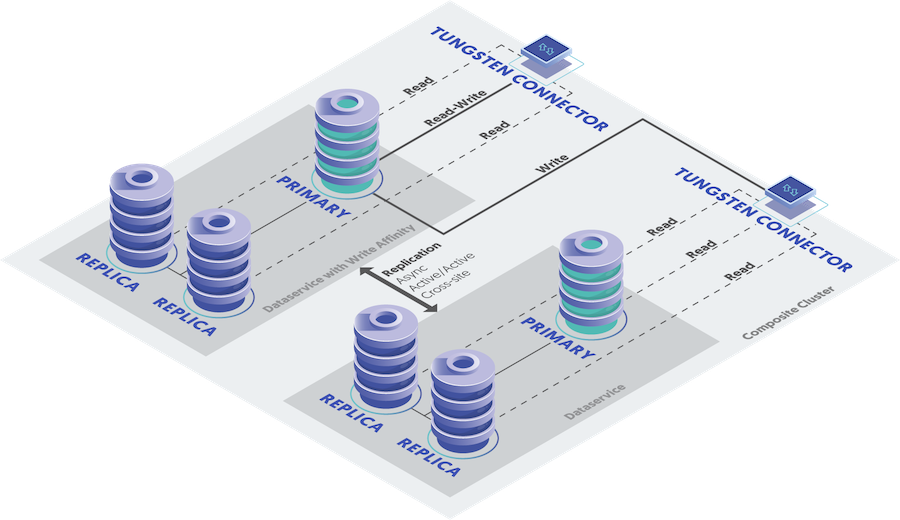Composite Dynamic Active/Active builds on the foundation of the Composite Active/Active topology and the cluster continues to operate and be configured in the same way.
The difference is, with Composite Dynamic Active/Active, the cluster instructs the Proxy layer to behave like a Composite Active/Passive cluster.
Within your configuration you specify write affinity to a single cluster, meaning that all reads will continue to balance between local replicas, but all writes will be directed to only one cluster.
The diagram below shows how a Composite Dynamic Active/Active would behave in a typical 2-cluster configuration.
The benefit of a Composite Dynamic Active/Active cluster and being able to direct writes to only one cluster, avoids all the inherent risks of a true Active/Active deployment, such as conflicts when the same row is altered in both clusters.
This is especially useful for deployments that do not have the ability to avoid potential conflicts programmatically.
The additional benefit this topology offers is instant failover of writes in the event of a cluster failure. In Composite Dynamic Active/Active if the cluster with write affinity fails, writes instantly failover to the other cluster, and because that cluster is open for writes, applications will continue uninterrupted. This differs from a Composite Active/Passive where in the event of a cluster failure there needs to be a manual failover process to re-route write operations.
